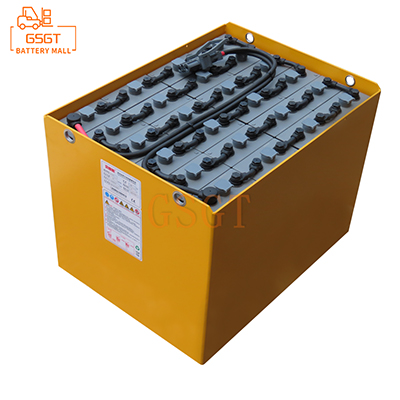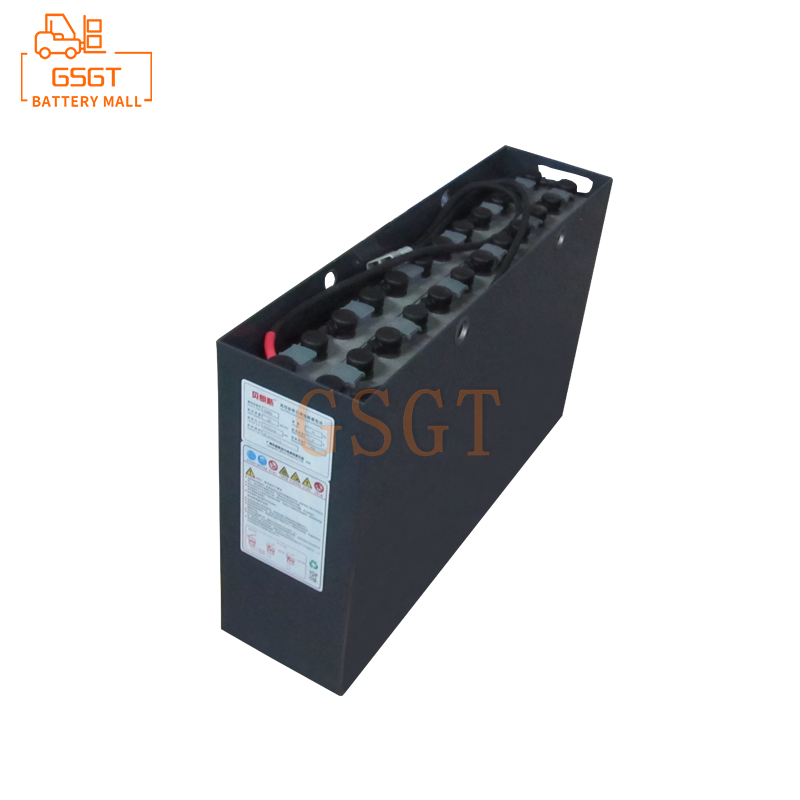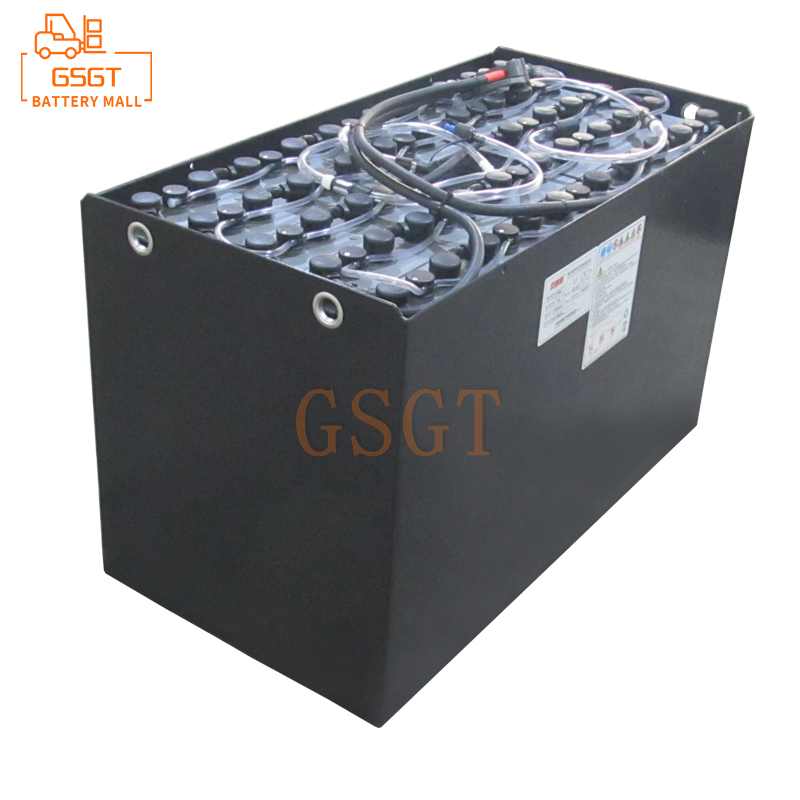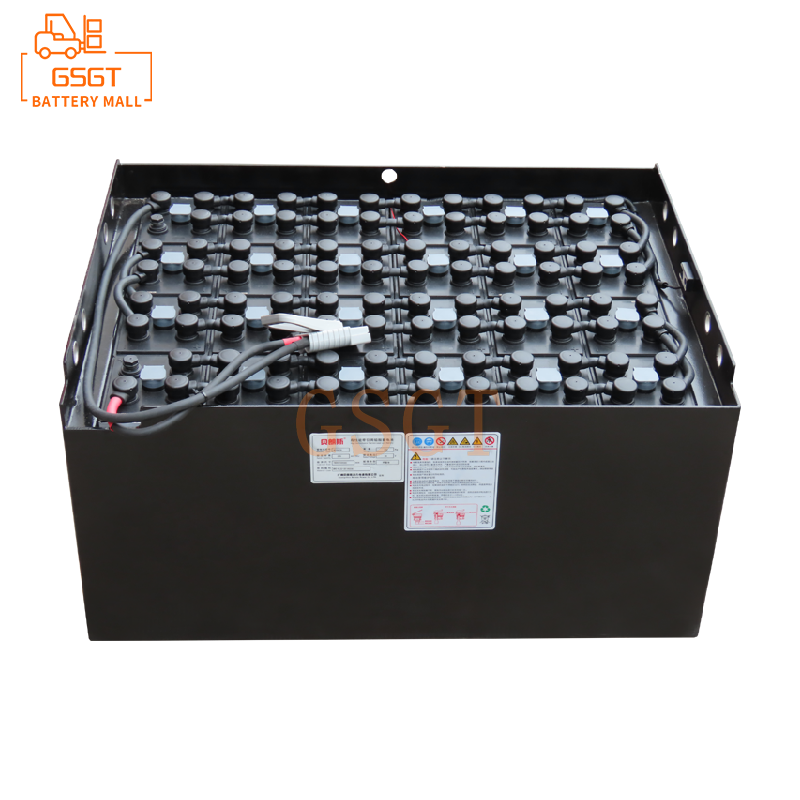Time:2025-06-16 11:18:11
Browse:596
Abstract
This article focuses on the safety assessment of lead-acid batteries in forklifts, deeply analyzes various safety risks they face during use, and systematically expounds the key indicators, methods and processes of safety assessment by combining relevant standards and actual cases. The aim is to provide scientific and comprehensive reference basis for the safety management and risk prevention and control of lead-acid batteries in forklifts, and ensure the safe and efficient operation of forklifts.
1. Introduction
In the modern logistics and warehousing industry, forklifts, as important handling equipment, are widely used in factories, warehouses, ports and other places. Lead-acid batteries have become the main power source for forklifts due to their advantages such as mature technology, low cost and good high-current discharge performance. However, with the increase in the frequency of forklift usage and the complexity of the working environment, the safety issues of lead-acid batteries have become increasingly prominent. Battery leakage, explosion, fire and other accidents not only cause equipment damage and property loss, but also may endanger the life safety of operators. Therefore, conducting a comprehensive and scientific safety assessment of lead-acid batteries in forklifts is a key link to ensure the safe operation of forklifts and reduce the risk of accidents.
2. Basic Structure and Working Principle of Forklift Lead-Acid Batteries
2.1 Basic Structure
Forklift lead-acid batteries are mainly composed of positive and negative plates, separators, electrolyte, battery cases, connecting strips, terminal posts and other parts. The positive and negative plates are the core components of a battery for converting electrical energy into chemical energy. The active material on the positive plate is lead dioxide, while that on the negative plate is spongy pure lead. The separator is placed between the positive and negative plates to prevent short circuits between them while allowing ions in the electrolyte to pass through. The electrolyte is generally prepared by mixing sulfuric acid and distilled water in a certain proportion and serves as the medium for electrochemical reactions within the battery. The battery cell is used to hold the plates, separators and electrolyte, and is usually made of materials with good corrosion resistance and insulation performance. The connecting strips and terminals are used to connect each individual battery cell to achieve the output of electrical energy.
2.2 Working Principle
The working process of lead-acid batteries is a reversible electrochemical reaction process. During discharge, lead dioxide on the positive plate and lead on the negative plate react with sulfuric acid in the electrolyte to form lead sulfate and water, simultaneously releasing electrical energy to power the forklift. The chemical reaction equation is: PbO₂ + 2H₂SO₄ + Pb = 2PbSO₄ + 2H₂O. During charging, an external power source supplies electrical energy to the battery, reducing lead sulfate to lead dioxide and lead. The concentration of sulfuric acid in the electrolyte increases, and the battery returns to its energy storage state.
3. Safety Risk Analysis of Lead-Acid Batteries in Forklifts
3.1 Electrical Safety Risks
1. ** Short Circuit Risk ** : Damage to the internal plates of the battery, rupture of the separator, or the fall of external metal foreign objects into the battery can all cause direct contact between the positive and negative electrodes, leading to a short circuit. When a short circuit occurs, a huge current is generated, releasing a large amount of heat instantly, which may cause the battery casing to melt, catch fire or even explode.
2. ** Risk of Overcharging and overdischarging ** : During the operation of forklifts, if the charging equipment malfunctions or the operator operates improperly, it may lead to battery overcharging. Overcharging can cause a large amount of gas to be generated inside the battery, leading to an increase in internal pressure. In severe cases, it can cause the battery casing to swell and rupture, and even trigger an explosion. However, over-discharging will cause sulfation of the battery plates, reducing the battery's service life. At the same time, it may also lead to safety hazards such as battery overheating.
3.2 Chemical Safety Risks
1. ** Electrolyte leakage Risk ** : If the battery casing is damaged due to collision, aging or other reasons, it may cause electrolyte leakage. The sulfuric acid in the electrolyte is highly corrosive. Once it leaks, it will corrode the ground, equipment, as well as the skin and clothing of the operators, causing environmental pollution and personal injury.
2. ** Gas Emission Risk ** : Lead-acid batteries produce gases such as hydrogen and oxygen during charging and discharging. When these gases accumulate to a certain concentration in a closed or poorly ventilated environment and encounter open flames or electric sparks, they may cause an explosion accident.
3.3 Mechanical Safety Risks
1. ** Risk of Unstable Battery fixation ** : During the operation and movement of forklifts, vibration and jolting occur. If the battery fixation device becomes loose or damaged, the battery may shift or fall off, which not only damages the battery but also may cause harm to the operator and surrounding equipment.
2. ** Risk of Handling and Collision ** : During the handling and replacement of batteries, if the operation is improper, such as the steel wire rope breaking during hoisting or the forklift colliding with the battery, it may cause damage to the battery casing, leading to electrolyte leakage and other safety issues.
3.4 Environmental Safety Risks
1. ** High-temperature Environment Risk ** : When forklifts operate for a long time in high-temperature environments or when the battery is charged, poor heat dissipation can cause the battery temperature to rise. Excessively high temperatures can accelerate the chemical reactions inside the battery, reduce its service life, and also increase the risk of battery explosion and fire.
2. ** Risk of Damp Environment ** : When lead-acid batteries are used in a damp environment, the insulation performance of the battery casing will decline, which can easily lead to leakage accidents. In addition, a humid environment may also cause the battery terminals to rust, increase contact resistance, and affect the normal use of the battery.
4. Methods and Procedures for Safety Assessment of Lead-Acid Batteries in Forklifts
4.1 Evaluation Method
1. ** Visual Inspection method ** : By directly observing the appearance of the battery, check whether the battery casing is damaged, swollen or deformed, whether the terminal posts are rusty or loose, and whether the connecting strips are broken, etc. Visual inspection is the most fundamental assessment method, which can quickly identify some obvious safety hazards.
2. ** Instrument Testing Method ** : Utilizing professional testing instruments such as multimeters, battery internal resistance testers, and voltage detectors, the performance parameters of the battery, including voltage, internal resistance, and capacity, are tested. By analyzing the changes in these parameters, the health status of the battery can be determined, and potential safety issues can be detected in advance.
3. ** Chemical Analysis Method ** : Conduct chemical analysis on the density of the electrolyte, the concentration of sulfuric acid, etc., to determine whether the electrolyte has deteriorated and whether its concentration meets the requirements. Chemical analysis can help understand the chemical reactions inside the battery and evaluate its performance and safety.
4. ** Risk Assessment Matrix Method ** : A risk assessment matrix is established based on the occurrence probability and severity of battery safety risks. Classify different security risk factors into corresponding risk level areas, thereby determining the priority of risks and providing a basis for formulating risk control measures.
4.2 Evaluation Process
1. ** Preparatory Work ** : Clarify the purpose, scope and object of the assessment, and collect relevant materials, including technical parameters of the battery, usage records, maintenance records, etc. Prepare the testing instruments and tools required for the assessment, determine the assessors, and provide them with relevant training.
2. ** On-site Inspection ** : Conduct on-site visual inspection of the lead-acid battery of the forklift to check the installation of the battery, whether the fixing devices are firm, and whether the surrounding environment meets safety requirements, etc. Meanwhile, the performance parameters of the battery are detected by using instruments and the detection data is recorded.
3. ** Data Analysis and Evaluation ** : Organize and analyze the test data, and evaluate the safety of the battery in combination with relevant standards and bases. The risk assessment matrix method is employed to evaluate various security risks and determine the risk levels.
4. ** Report Preparation ** : Based on the assessment results, prepare a safety assessment report. The report should include the assessment purpose, scope, methods, results, existing security risks and risk levels, as well as improvement suggestions, etc. The report should be objective, accurate and detailed, providing a basis for subsequent safety management and decision-making.
5. Measures to Enhance the Safety of Lead-Acid Batteries in Forklifts
5.1 Strengthen daily maintenance and management
1. ** Regular Inspection and maintenance ** : Establish a strict daily inspection and maintenance system for batteries, regularly check the battery's appearance, terminal connection, electrolyte level, etc., and promptly identify and address any issues. Regularly perform charge and discharge maintenance on the battery to prevent sulfation of the battery plates.
2. ** Standardize Operating Procedures ** : Strengthen the training of operators to ensure they are familiar with the correct usage methods and safety operation procedures of forklift lead-acid batteries. Overcharging, overdischarging, short-circuiting and other illegal operations are strictly prohibited to ensure that the battery operates in a safe state.
5.2 Improve battery technology and design
1. ** Adopt new materials ** : Research and apply new battery materials, such as highly conductive plate materials and high-performance separator materials, to enhance the performance and safety of batteries. For instance, using nanomaterials to fabricate plates can enhance the utilization rate of active substances on the plates, reduce the internal resistance of the battery, and decrease the heat generation phenomenon.
2. ** Optimize battery structure ** : Improve the sealing structure of the battery to enhance its leak-proof performance. Design more reasonable gas emission channels to ensure that the gases generated inside the battery can be discharged in a timely manner and reduce the risk of explosion.
5.3 Improve safety protection facilities
1. ** Install battery protection devices ** : Install overcharge and overdischarge protection devices, short-circuit protection devices, etc. on the battery. When the battery experiences abnormal conditions, the protection devices can automatically cut off the circuit to prevent accidents.
2. ** Improve the working environment ** : Ensure good ventilation in forklift operation and battery storage areas, and install safety facilities such as fire prevention, explosion prevention, and corrosion prevention. Set up guardrails around the battery to prevent personnel and equipment from colliding with it.
6. Conclusion
The safety assessment of lead-acid batteries in forklifts is a systematic and complex task, involving multiple aspects such as electrical safety, chemical safety, mechanical safety and environmental safety of the batteries. By conducting a comprehensive safety assessment of batteries, potential safety risks can be identified in a timely manner, and effective risk control measures can be taken to reduce the probability of accidents. Measures such as strengthening daily maintenance and management, improving battery technology and design, perfecting safety protection facilities, and establishing emergency response mechanisms are of great significance for enhancing the safety of lead-acid batteries in forklifts. In future work, the safety assessment system should be continuously improved, and related technical research should be strengthened to provide more reliable guarantees for the safe operation of forklift lead-acid batteries and promote the safe and sustainable development of the logistics and warehousing industry.

$3405

$1060

$3050

$5710

MESSAGE
Professional And Efficient
Security
Affordable Price
Professional Services